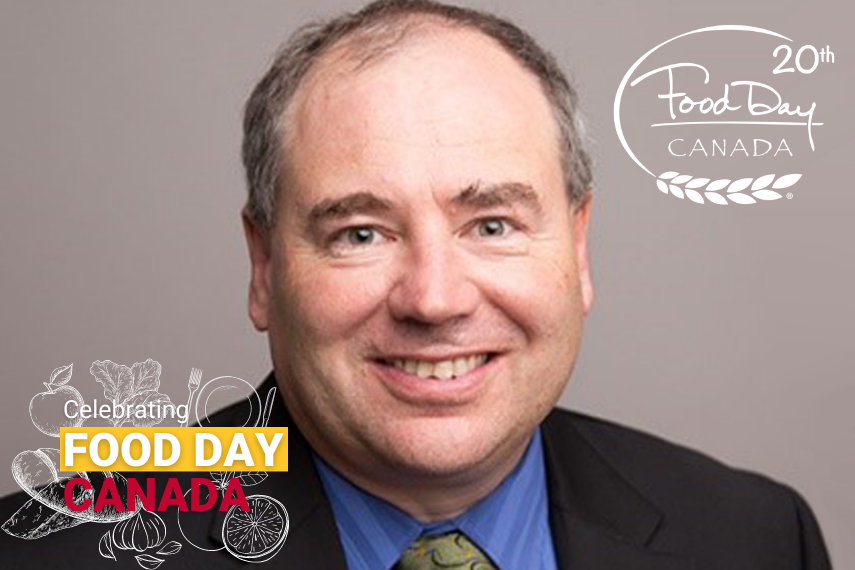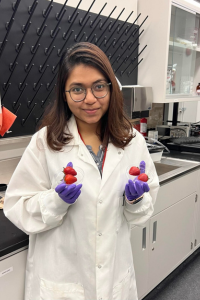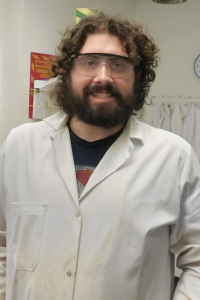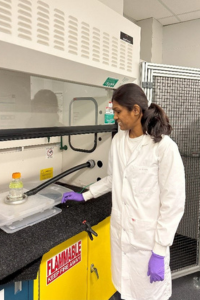Food Day Canada 2023 - What do Engineers have to do with Food?

When people think of food, they think of farmers, grocery stores and restaurants, they don’t think of engineers. To celebrate Food Day Canada, we asked Dr. Kevin M. Keener, the Barrett Family Foundation Chair in Sustainable Food Engineering, to provide some insight into the relationship between engineering and the foods we enjoy. In response, Dr. Keener, shared the spotlight with a few of his students working in the Sustainable Food Systems Innovation Lab. Below are their answers to three questions, highlighting their hands-on experience and innovative work with sustainable food engineering.
Simontika Chowdhury, 3rd year Biomedical Engineering student
1. How is the field of engineering changing the food industry?
As an undergraduate researcher in the Sustainable Food Systems Innovation laboratory at the University of Guelph, my primary focus revolves around extending the shelf life of fresh strawberries while preserving their quality. Our goal is to achieve a remarkable 15-day shelf life, a milestone that would hold significant importance in the agricultural industry.

2. How is your work trying to improve food security?
The innovative sanitization technology we are exploring has the potential to revolutionize the shelf lives of many fresh fruits and vegetables. Looking ahead to the next decade, I envision a future where consumers can find pristine, mold-free strawberry quarts readily available on store shelves, making these delightful fruits more accessible to everyone.
3. What do you think the top three changes consumers will see in the next decade at the grocery store?
In tandem with this technological progress, I have noticed a growing trend among consumers to be more environmentally and ethically conscious in their food choices. This consumer awareness has the potential to motivate grocery stores to expand their offerings of sustainably produced and ethically sourced products, catering to the preferences and values of mindful consumers.
Mitchell Walker, Laboratory Researcher, B. Eng ‘19, MASc. ‘21
1. How is the field of engineering changing the food industry?
Food engineers are often overlooked but nevertheless a crucial part of the food industry. From the design of new food processing techniques to refinements on existing manufacturing methods, to the development of completely new foods and treatments, food engineers touch all aspects of the food system from production to processing. Food engineers are designing new processes that allow for foods which would never have been considered otherwise, such as plant-based “meat”. The field is also finding new methods to reduce food losses and food waste, converting these “leftovers” into healthy and nutritious, and desirable foods, such as stale bread into beer. The overall results are reduced food insecurity while at the same time producing a greater yield from farmers fields.

2. How is your work trying to improve food security?
The Sustainable Food Systems Innovation Lab has been using high voltage atmospheric cold plasma to address two of the largest problems in food security, bacterial contamination, and the extension of product shelf life. My research in this lab has investigated the use of plasma activated water (PAW) to destroy harmful pathogens on common materials used in animal production and food processing facilities: stainless steel, PVC, wood, and concrete. The PAW generated in these experiments has been shown to reduce bacteria by 99.9% while also being an environmentally friendly cleaning solution. The PAW can be generated with only air and water and a few Watts of electricity, making it a cost-effective method for producing an on-demand sanitizer. Utilizing this technology and process it is possible to eliminate harmful bacteria providing greater a level of food safety in our food systems.
3. What do you think the top three changes consumers will see in the next decade at the grocery store?
- Shelf-life increases
- Premium products (More flavour/color)
- Enriched Foods (higher protein/vitamin/beneficial compound density)
Himashree Ponrajan, MASc Biological Engineering
1. How is the field of engineering changing the food industry?
Food engineers are infusing innovation and technology to reshape the way we produce, process and enjoy our food. Food engineers in India came up with a fantastic way to use banana peels, a key food industry waste product. They devised a method to economically separate the useful banana fibres from the peels, which they subsequently applied to the production of biodegradable clothing, paper, and packaging. This programme not only decreased food waste but also provided farmers more money, improved the environment, and increased sustainability. Similar waste-utilization programmes have been started all over the world because of this strategy's success.
Other examples include tech-infused agriculture, where precision farming maximises agricultural yields while minimising water and fertiliser use by employing drones and sensors to optimise crop growth. Or applying food engineering principles to get the ideal texture and flavour profile, scientists carefully experiment to bring out products like plant-based food or extruded snacks that is comparable to more conventional and unhealthy treats.

2. How is your work trying to improve food security?
Imagine a futuristic technology that could easily remove harmful pathogens from your favorite fruits and veggies, keeping them fresh for longer while preserving their mouthwatering goodness. Enter cold plasma technology—the electrifying solution that's revolutionizing the food industry and tackling its toughest challenge. Cold plasma treatments have proven to enhance food safety, extend shelf-life, preserve the nutritional quality, and sterilize food packaging materials and food equipment.
I am working on developing a cold plasma process to eliminate pathogens and spoilage organisms in raw chicken meat to ensure food safety, preserve quality and extend shelf-life. Developing a plasma-activated water (PAW) for raw meat rinsing has shown a great potential to remove microorganisms residing on the chicken skin that were hard to remove by the conventional practices. From pre-rinsing to post-processing, PAW has a wide versatility ensuring thorough and efficient decontamination, keeping the entire production line safe and offering an eco-friendly solution to safety issues in poultry houses to consumers. This decontamination technique can be utilized without negatively affecting the meat quality and reduce risk of food-borne illness affecting workers in poultry houses, chicken handlers and the consumers.
3. What do you think the top three changes consumers will see in the next decade at the grocery store?
Future grocery stores are poised to offer a remarkable array of novel non-thermally treated food products. From raw-infused treats to cold-pressed wonders and beyond, innovative non-thermal techniques are set to transform the way we experience food. The cutting-edge technologies that promise fresher, healthier, and more nutrient-rich food options such as high-pressure processed juices, plasma treated fruits, irradiated spinach, ultrasonicated milk, etc. can be found in the stores with fantasy labels.
The store experiences could be transformed by smart sensors in food packaging that improve food safety, cut waste, and give customers useful information. It can do real-time food quality monitoring to provide safe and fresh products to consumers and minimize waste and optimize inventory management for the retailers.
Consumers are prioritizing environmental and ethical issues in their food buying habits. Hence grocery stores might have a huge section of environmentally friendly processed and sustainable products. The stores will probably increase the selection of plant-based meats, dairy substitutes, and other protein-rich plant-based goods as a result. Additionally, there might be more cutting-edge choices, including lab-grown meat and novel protein sources made from algae or insects, giving consumers a wider range of environmentally friendly and protein-rich options.